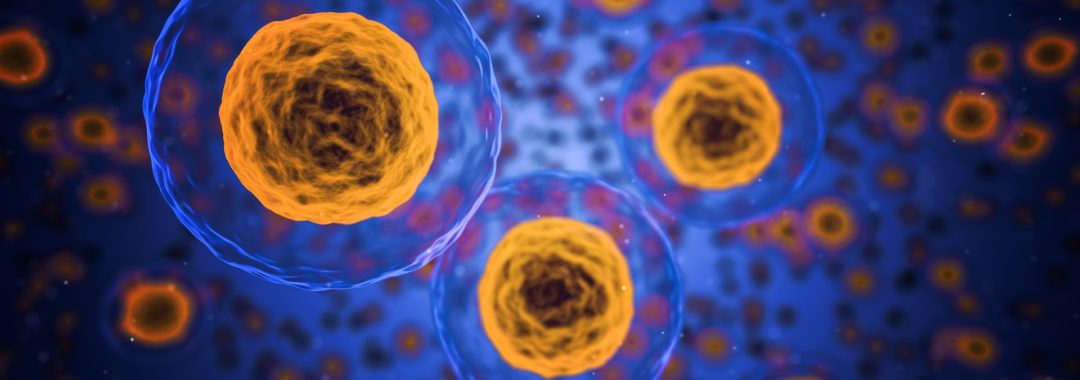Endometriosis can be a challenging condition to deal with, both physically and emotionally. But with proper interventions and proper management and treatments after diagnosis, you can be shown how to deal with the associated symptoms of endometriosis and improve your quality of life. Please have a read of some of the best ways to cope with endometriosis.
What is Endometriosis?
Endometriosis can be painful disorder that is characterized by tissue that behaves like the lining of the uterus but that grows outside the uterus. Endometriosis is really normal tissue growing in abnormal places. This tissue can be found in various places, such as the ovaries, fallopian tubes, and pelvic lining, and even in or around the bladder and bowel.
Endometriosis affects around 1 in 10 women and girls and those are only the ones diagnosed. This mean these figures are grossly under-diagnosed and downplayed with many women not being diagnosed properly and those that do not even know they have the disease. Endometriosis can cause symptoms during the reproductive years, between the ages of 12 and 60, but it can show up in young girls under 10 years old too. Many people with the condition remain undiagnosed and many more and missed and dismissed with many taking up to ten years or more to be diagnosed.
What are the symptoms of Endometriosis?
The main symptom of the condition is usually pelvic pain typically associated with the menstrual period. While women can experience some discomfort during their menstrual period, some of those with endometriosis describe pain that is worse than usual. For some it is actually unbearable.
There are also other symptoms such as painful periods, pelvic pain, ovulation pain, pain with sex, chronic fatigue, irritable bowel like symptoms, bladder issues and pain and bleeding on bowel movement. This is why all women need to know that period pain is not normal, because many times, period pain can actually be a sign that a woman has an underlining gynaecological conditions such as endometriosis.
We also need for everyone to know that endometriosis is not just about period pain. There are many other symptoms women face when dealing with endometriosis.
There is no cure, but there ways to manage Endometriosis
There is no cure for endometriosis (not yet anyway), but there are treatment options and lifestyle changes that can ease your symptoms so that the condition does not interfere with your day-to-day life.
The main thing with endometriosis is to manage the disease and try and create a quality of life moving forward. While there is no cure for endometriosis, it is possible for women to become asymptomatic (meaning having no symptoms) and this requires the right treatments and management of the disease and to see the right people from the beginning.
Again, it all gets back to who you are seeing and their experience with knowing about endometriosis. This is one the biggest issues women face when trying to get treatment. Many just do not know much about the disease at all and why women are left to deal with the horrible symptoms. But with the right treatment and management, women can have a better life and be able to cope with this horrible disease.
Before we look at proper management for women with endometriosis, it is important that all understand the facts because there is so much misinformation out there and this is part of the bigger issue for women with this disease.
Surgical intervention and medications alone are not enough
While surgical interventions are hormones/medications are needed for women with endometriosis, alone, or in combination are not enough. We know that despite the best surgical and medical intervention that women are still in pain and still having the associated symptoms of endometriosis. This is why women do need a multimodality/team approach, and a combination of different modalities to effectively manage endometriosis.
The problem for many is that once they have the surgery, they believe their endometriosis is gone, or that they don’t have to do anything else. This is where many go wrong and why they end up having to have multiples surgeries. Women need proper ongoing management after surgery, which includes medications, hormones, other therapies, counselling, physiotherapy, mindfulness, exercise, diet and lifestyle interventions and so much more. Without this, endometriosis cannot be effectively managed.
The Facts About Endometriosis
- Period Pain IS NOT Normal
- A significant portion of women with Endometriosis are asymptomatic
- Symptoms DO NOT correlate to the extent of the disease
- The only way to diagnose Endometriosis definitely is via surgical intervention
- There is NO cure for Endometriosis
- Having a baby will not cure endometriosis
- Endometriosis does not always cause infertility
- Endometriosis is Estrogen Driven and is not caused by Estrogen dominance
- The Pill, or Contraceptives DO NOT fix endometriosis
- You can have Endometriosis at a Young, or Older Age
- Hysterectomy does not cure endometriosis
- Endometriosis requires a multi-modality approach to be managed properly. You need a team for proper management
- Endometriosis IS NOT an autoimmune disease
- There Are Hereditary and Genetic links
- Endometriosis can cause many other issues in the body
- The first line approach for hormone therapy should be the use of progesterone only options
- Endometriosis needs to be excised (cut out) by an advanced laparoscopic surgeon, who has had extra years of specialised surgical training, and who specialised in the excision of the disease and specialised in the disease itself. Surgery should be performed by anyone other than an advanced laparoscopic surgeon and not by just a regular gynaecologist
- Not all women with endometriosis have suffered sexual abuse
What Women Can Do To Help Manage Endometriosis
1.Seeing the Right Specialist & Surgeon
First and foremost make sure you have seen someone who specialises in endometriosis and the management and treatments moving forward. You also need to make sure that your first surgery is your best surgery and that you have seen an advanced laparoscopic surgeon to ensure you have had the proper surgical intervention. This is many women’s biggest issue as they have not seen the proper surgeon initially and they aren’t seeing someone who specialises in the management of the disease moving forward.
2.Watch your diet
Eating the right foods may provide some protection from the symptoms of endometriosis. The role of diet in endometriosis has been investigated in recent years due to the influence of diet on some of the processes linked to the disease, such as inflammation, prostaglandin metabolism, and estrogen activity. Many of the so called endometriosis diets out there are now outdated and have outdated nutritional and dietary advice that don’t really help much at all. Women need to adopt an anti-inflammatory diet (grain free, non-refined food ) to help with settling any inflammation in the body and also helping the immune system. This also needs to include prebiotic and probiotic bacteria to help with digestive function, immunity and gut health.
Certain environmental estrogens such as preservatives, plastics, pesticides and insecticides that can be ingested through certain nutrients have been suggested as risk factors for exacerbating endometriosis too.
Excess body fat, now known as obestrogens (because it is estrogenic) needs to be controlled and managed through diet and exercise too. We know that estrogen drive endometriosis and that any estrogens (dietary, body fats, environmental etc) needs to be regulated and controlled.
3.Boost intake of omega-3 fatty acids
Researchers have also found that the type of fat included in your diet makes a difference in your risk of endometriosis. Studies have shown that people whose diets were heavily laden with trans fats increased their risk of the expression of endometriosis by 48 % when compared with individuals who ate the least of these. By comparison, women whose diets were rich in omega-3 oils lowered their risk of endometriosis by 22 % compared with those who consumed the least amount.
Eating foods high in omega-3 fatty acids, such as salmon, flaxseeds, almonds, and walnuts, may be helpful for endometriosis. Women should also be supplementing with Omega 3 oils too. Just remember, it is all about reducing inflammation.
4.Exercise
Often, people who experience pain fear exercising, in case it causes more problems for them. But over time, regular physical activity may decrease the pain and discomfort that you feel. High-intensity exercise and resistance training can help to reduce the symptoms of endometriosis.
Exercise may help those with endometriosis in many ways, including:
- encouraging the circulation of blood to your organs
- maintaining nutrients and oxygen flow to all your body systems
- decreasing estrogen production
- reducing stress
- releasing endorphins in the brain, which are pain-relieving, “feel good” chemicals
Women who regularly exercise may be likely to have the symptoms associated with endometriosis. Research has shown that those who engage in frequent high-intensity physical activity have fewer symptoms of endometriosis than women who do not participate in regular exercise. High-intensity physical activity, such as running, swimming, weight training etc, may be beneficial for reducing your symptoms.
Low-intensity exercise, including Yoga and Pilates may provide some relief in endometriosis, too. Yoga and Pilates can stretch and strengthen your muscles, help with core strength, help with circulation, which all may be beneficial for pelvic pain management and stress reduction.
5.Managing Stress Levels
Stress is a big factor in any disease and can make any disease worse. Not only can stress be exacerbated by endometriosis, but so can endometriosis symptoms be exacerbated by stress, in a never-ending cycle. Endometriosis could contribute to making your stress levels worse, due to the impact that the associated symptoms have on all aspects of your life, including family and personal relationships and work.
Stress management, Counselling, Mindfulness and Relaxation techniques can help to reduce stress that exacerbates endometriosis-related symptoms and pain.
Women with endometriosis need to manage stress by using mindfulness and relaxation techniques. These can help you to increase your awareness of your body, refocus on something calming, and reduce the activity of stress hormones and inflammation in the body. It is all about learning coping mechanisms and what works best for you, not what works best for others.
6.Try complementary medicine and therapies
Many women with Endometriosis find symptom relief from using a range of different complementary and alternative medicines. The Royal College of Obstetricians and Gynaecologists also recommends that women try natural medicines to help with the management of endometriosis and the associated symptoms. There is now some good research to support many natural medicines treatments such as acupuncture, Chinese herbal medicine, vitamins, omega 3 oils, probiotics, chiropractic/osteopathy, yoga, pilates and more, alongside medical interventions.
Acupuncture and Chinese medicines has some good research around period pain and pelvic pain and may be beneficial to those suffering this disease and its associated symptoms, alongside medical interventions.
Certain strains of prebiotics and probiotics have also been shown to help with the immune system, microbiome, bowel, and digestive associated symptoms of endometriosis. Probiotics have also been shown to not only help with digestive and immune function, but also with the psychological function as well. It does need to be specific strains of probiotics though.
Just like with medical treatments, when it comes to complementary medicines, it is important to find someone who is a qualified practitioner and who specialises in endometriosis. Just like in the medical model, this can also be hard to find.
7.Medications
Your endometriosis specialist can provide you with a list of treatment options for endometriosis and outline the risks and benefits of each. They will take into account your age, your symptoms, whether you want to become pregnant, and any treatments that you have had previously. It is important to manage pain and inflammation so that you can have a life and to be able to function daily.
You may need to use different forms of pain medications on script, as well as those that can be purchased over the counter. Please ensure you speak to your healthcare provider about setting up a pain management plan when using medications
You will also need to look at hormone therapy to help slow down the growth and expression of the disease and microscopic implants and also help with the associated symptoms of the disease. Hormones will usually be in the form of progesterone only medications and gonadotropin-releasing hormone antagonists and agonists. You may be prescribed other hormones depending on your individual case and symptoms.
Although all of these hormone therapies are effective at treating endometriosis, but, they all have different side effects. You need to talk to your doctor and pharmacists about the side effects and risk factors of any medications and hormones that you are taking.
In Summary
It is important to know that women with endometriosis will need a multi-modality, or team approach to deal with this disease. The team you need and modalities that you will need will be dependent on your individual symptoms.
Try and find healthcare professionals that can offer you a multi-modality approach for ongoing care and support and who also have a team of other people who are experts in the disease too. Again, the approach that you and your healthcare profession choose to take will vary depending on your signs and symptoms, and whether or not you would like to become pregnant in the future.
Before starting any treatment, it is important to know all of your options and the potential outcomes of all of them and to know that the people that you are seeing are and expert in endometriosis and know how to manage the disease properly. That can often be the hardest thing to find and why you need to do your homework and see people who are experts in this area of medicine.
Regards
Andrew Orr
-No Stone Left Unturned
-Period Pain IS NOT Normal
-The Endometriosis Experts












